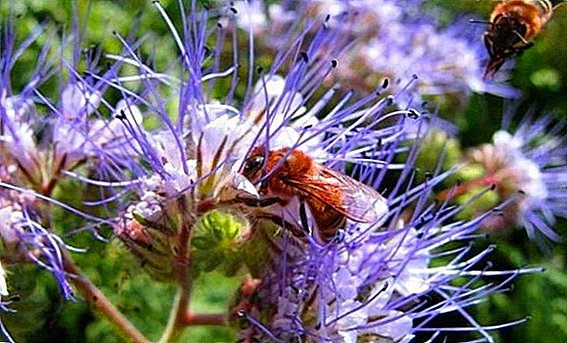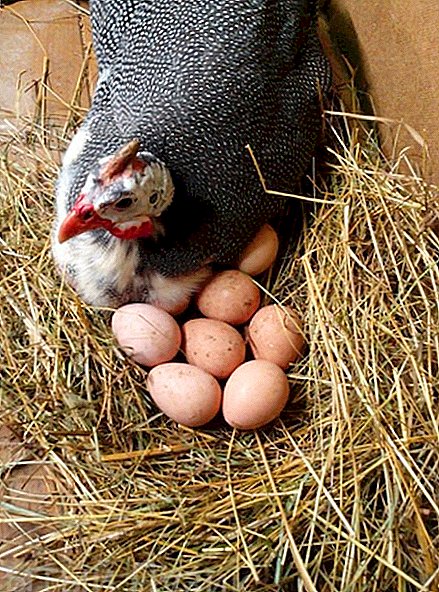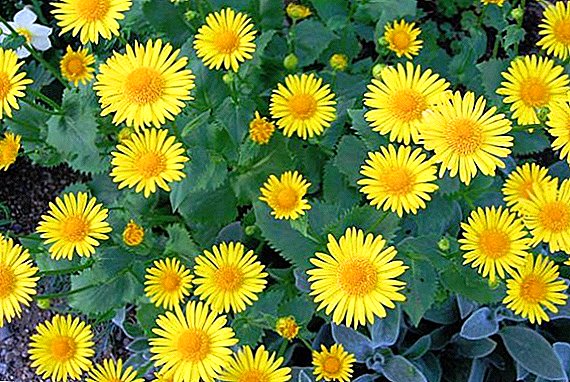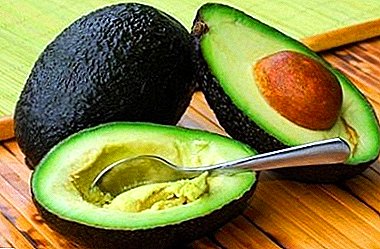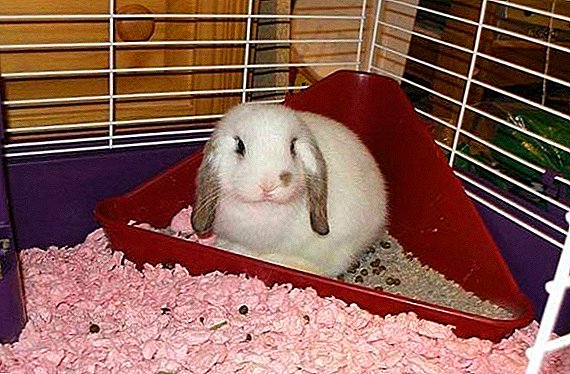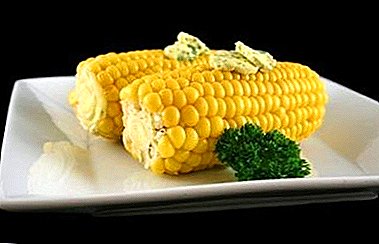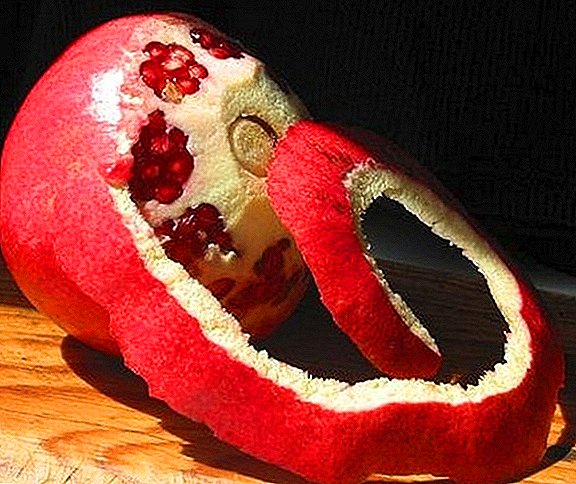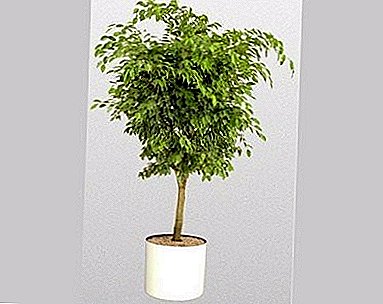
Ficus are one of the most popular domestic plants because of their unpretentiousness and spectacular appearance.
The most interesting in this respect Ficus Benjamin, or rather its kind - kinks.
Named ficus in honor of the British botanist specializing in seed plants, Benjamin Deidon Jackson.
Kinky - in translation into Russian means "curly."
general description
This species is an evergreen tree shrub with small green leaves of elongated shape. (up to 4 centimeters in length), falling branches and lignified trunk. A distinctive feature of kink leaves: a yellow-beige or light lettuce uneven stripe along the edge of the leaf.
Department: Angiosperms (Flowering)
Class: dicotyledonous
Order: Rosaceae
Family: Mulberry
Genus: Ficus
View: Benjamin Ficus
Subspecies: Benjamin Ficus kinki.
It is native to the tropical climate of Africa, Southeast Asia, India and northern Australia, where it has the appearance of a real tree that grows to 25-30 meters.
Home care
After buying the flower is best transplanted into a small ceramic or plastic pot, not forgetting the drainage.
Otherwise, it is likely that the leaves of the plant will fall off due to the store soil.
Reference: For Kinki ficus, it is desirable to immediately select a permanent place in the house, since he does not tolerate the rearrangement.
A photo
In the photo ficus "Benjamin Kinki":



Soil and dressing
The soil should be slightly acidic or neutral. Since it is depleted over time, it needs to be fed with special mineral compounds. This is especially true in the spring, when the ficus begins to grow actively after winter “hibernation”. During this period and before the onset of autumn, the soil should be fertilized at least once or twice a month. In the fall, the frequency of dressings is reduced, and in winter this procedure is no longer required.
Lighting
He is very photo-loving, And best of all is scattered light. Direct sunlight can cause leaf burns, and insufficient lighting leads to slower plant growth.
Temperature
The optimum air temperature is not lower than 15 ° С and not higher than 30 ° С.
In this regard, it is not necessary to place a pot with a plant next to heating devices, as well as in drafts and unglazed loggias.
Watering
For ficus kinki optimal will be moderate moisture. With abundant watering can damage the root system. Soil drying should also be avoided. The plant can be sprayed with not cold settled water.
Planting and transplanting
 Transplantation of young shoots is carried out at the very beginning of spring every year.
Transplantation of young shoots is carried out at the very beginning of spring every year.
Mature plants are transplanted much less frequently only when they become crowded in their old pots.
The sequence of actions during transplantation:
- take a larger pot;
- put the expanded clay drainage on the bottom;
- carefully pull the ficus out of the old pot along with the earthy clod;
- place in a new container and add the required amount of land;
- pour and fertilize.
Crown formation
The branches grow fast, therefore, to form a beautiful crown, they need to be cut.
This procedure for the plant is absolutely harmless and allows you to get the desired form of ficus: spherical or other.
Useful video on the correct formation of the crown:
Still young stalks of kinka can be intertwined with each other as you like, since they are quite flexible.
Pruning is best in spring or summer, so the crown will be more lush.
Breeding
It propagates by seeds or cuttings. Propagation by seeds occurs more often in the natural environment, but at home it is necessary to use the second method. To grow a kink from a cutting, you need to cut the cutting from the top or side sprig of the plant, wait for the milky juice to dry on the cut and place it in water.
After the sprout gives roots (faster it happens in the spring) ficus can be planted in the soil. Useful video breeding cuttings at home:
Benefit and harm
 Ficus benjamin kinks are practically harmless unless of course you try to eat them.
Ficus benjamin kinks are practically harmless unless of course you try to eat them.
It has a beneficial effect on the indoor climate. Namely, it moisturizes and cleans the air of harmful substances from the formaldehyde and benzoic groups.
Ficus has a number of medicinal properties used in traditional medicine.
With its help they treat:
- various hematomas;
- radiculitis;
- osteochondrosis;
- cysts at the base of the gums;
- mastopathy;
- myoma and other benign neoplasms.
And those families who want to have children are also advised to purchase this plant.
Diseases and pests
Drops the leaves, what to do?
 Like any other plant, it can get sick.
Like any other plant, it can get sick.
This can be expressed in yellowing and even subsequent leaf fall.
This can occur for the following reasons:
- low light;
- excess moisture;
- stress caused by relocation and relocation;
- low air temperature;
- use of cold water for irrigation;
- drafts and sharp temperatures.
A ficus may look completely healthy, but it does not increase in size. This may be due to the fact that the pot did not fit the plant in size.
But too large dishes lead to deterioration of the root system, which does not allow the plant to grow.
There are other causes of disease. Pests (spider mites, aphids) that occur due to too dry air in the room.
Important: rinse the plant under warm water and treat with special means.
Putrid bacteria - cause root rot.
Do not forget! transplant ficus and remove the affected parts of the roots.
Mealy dew - appears on the leaves of kinks.
Important: tear off infected leaves and treat with fungicide to prevent the spread of the disease.
Ficus kinki is very unpretentious in care, but still it is necessary to comply with certain conditions so that it will for a long time please the eye with its healthy and beautiful look.


